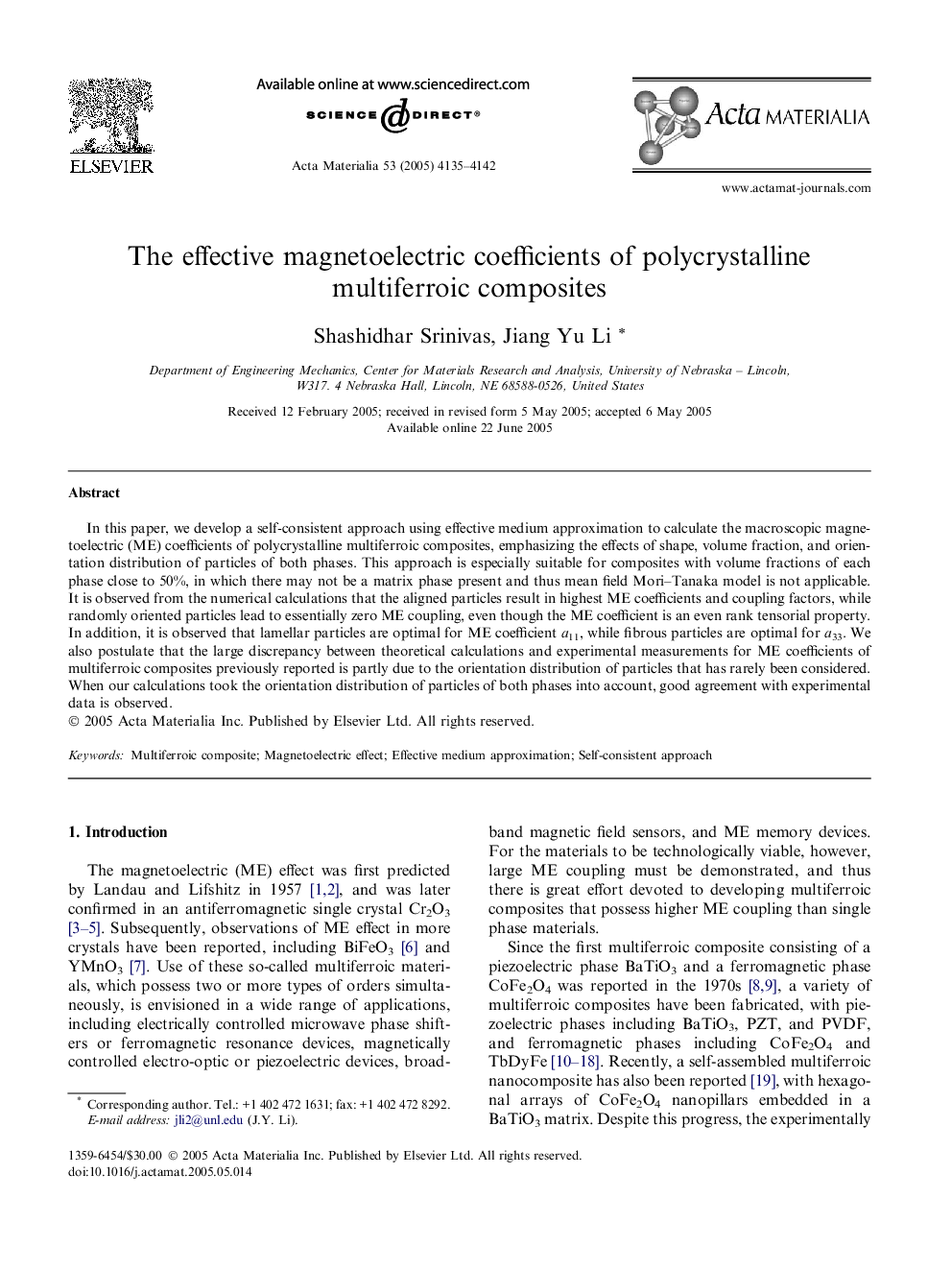| Article ID | Journal | Published Year | Pages | File Type |
|---|---|---|---|---|
| 1450709 | Acta Materialia | 2005 | 8 Pages |
In this paper, we develop a self-consistent approach using effective medium approximation to calculate the macroscopic magnetoelectric (ME) coefficients of polycrystalline multiferroic composites, emphasizing the effects of shape, volume fraction, and orientation distribution of particles of both phases. This approach is especially suitable for composites with volume fractions of each phase close to 50%, in which there may not be a matrix phase present and thus mean field Mori–Tanaka model is not applicable. It is observed from the numerical calculations that the aligned particles result in highest ME coefficients and coupling factors, while randomly oriented particles lead to essentially zero ME coupling, even though the ME coefficient is an even rank tensorial property. In addition, it is observed that lamellar particles are optimal for ME coefficient a11, while fibrous particles are optimal for a33. We also postulate that the large discrepancy between theoretical calculations and experimental measurements for ME coefficients of multiferroic composites previously reported is partly due to the orientation distribution of particles that has rarely been considered. When our calculations took the orientation distribution of particles of both phases into account, good agreement with experimental data is observed.
